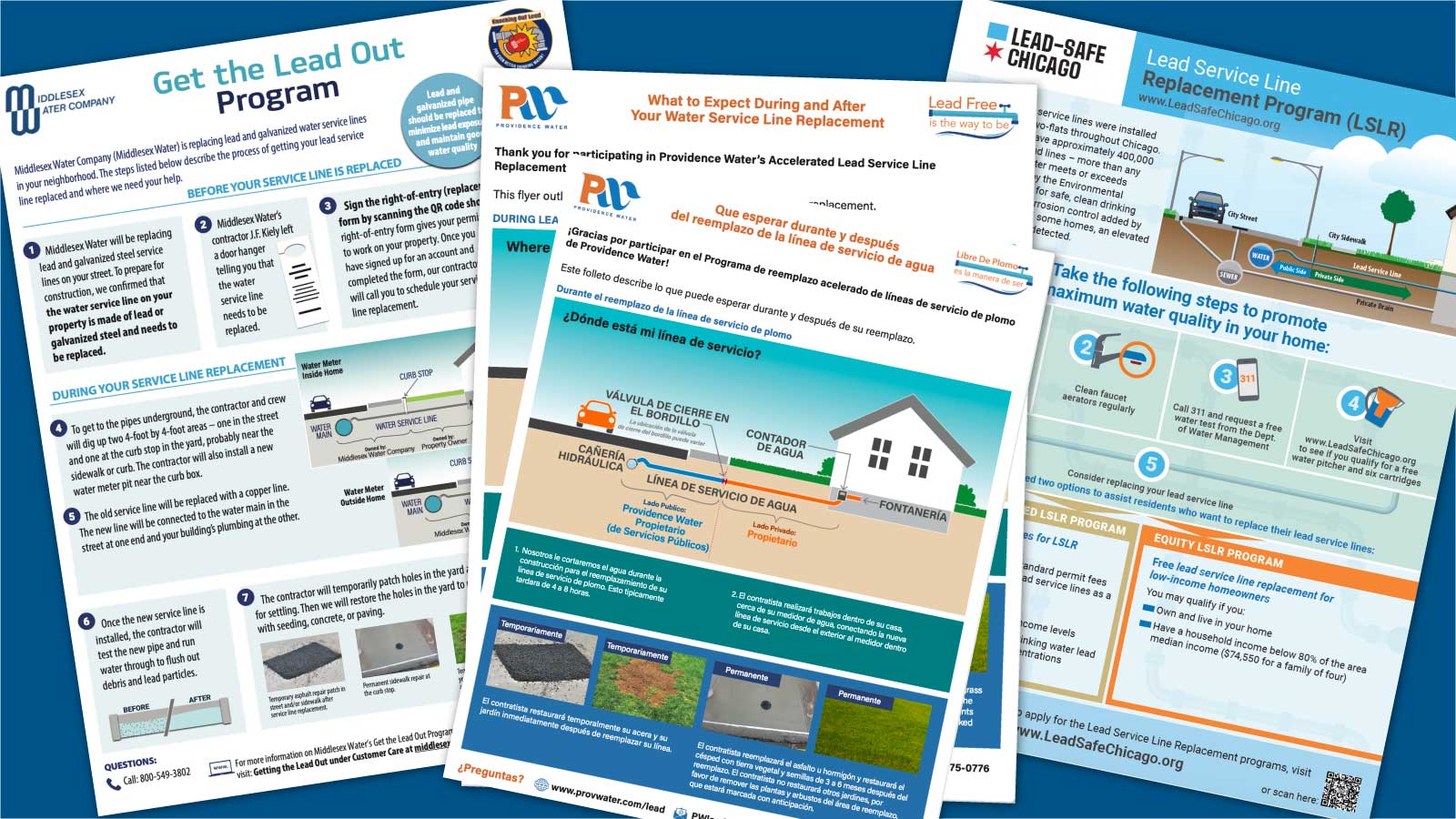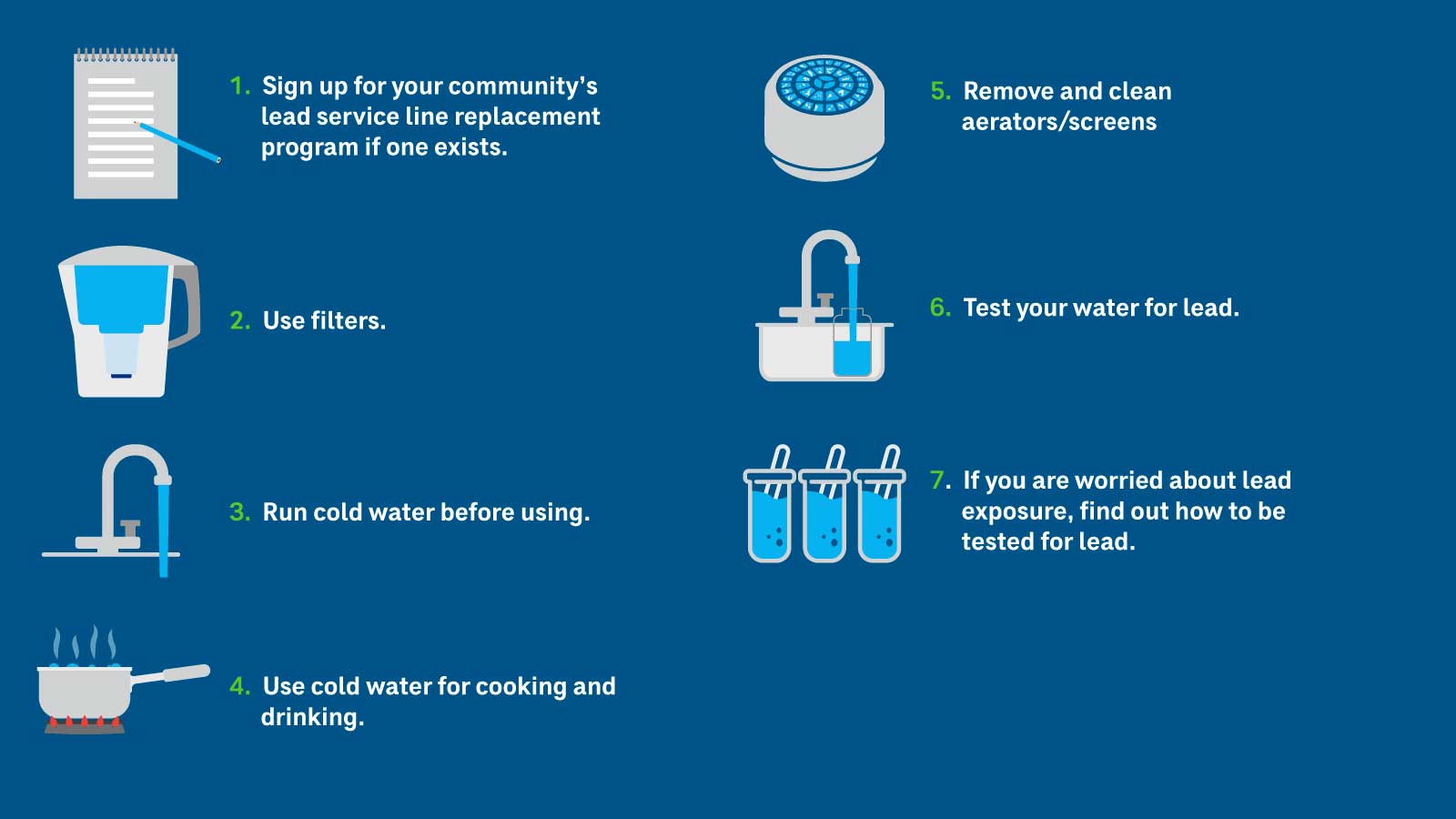Why does transparency matter when talking about water quality challenges?
Utilities across the country face increasingly difficult conversations about contaminants like PFAS and lead in drinking water. When regulatory requirements meet public concern, how utilities communicate can make the difference between maintaining trust and losing it entirely. Rose Hanson works on the front lines of some of the most complex lead and PFAS projects in the industry. Her approach centers on one principle: transparency isn't optional. It's essential.
Why is transparency so important when addressing water quality issues?
Transparency is the key to maintaining public trust. Regulatory requirements urge water utilities to address critical water quality issues like lead and PFAS contamination. It's not easy to share that a contaminant like lead or PFAS has been detected, but it's necessary. By bringing the public along with them, water systems actually have an opportunity to increase public trust.
Think about what happens when a water system digs a test pit to learn the material of a water service line. If they dig a test pit on private property, the customer may have signed a form to give you permission. The water system digs the test pit, update their inventory, but there's no regulation saying they have to do anything after that.
But what if you're the mom of a five-year-old? The water system is digging a hole in your yard, then filling it back in, and they know the material of the service line that connects to your home. Now you're really worried because they're looking for the material and they didn't know what it was before. It might be lead. If they tell you the service line is made of copper, that's reassuring; you now know your child is safe from exposure through that infrastructure.
If the water system tells you it's lead or galvanized requiring replacement, you can take proactive steps, like installing a water filter and exploring replacement plans. If they don't tell you anything, it's natural to have increased anxiety in the face of that uncertainty. And if the line is lead and the water system does not share any information immediately after learning the material, the decision to not be transparent could directly negatively impact your family's health and well-being.
If water systems tell someone the material directly after digging that test pit, customer trust increases. The water system is sharing information with customers right away, and the customers are now able to make a decision based on that information.
How do you break down complex topics like lead and PFAS for the public?
This is one of my favorite questions to answer: plain language and visuals.

If you look at some of the official language surrounding these contaminants, it's scary and sophisticated. Let's take PFOA, for example. The required health effects language that's currently in the books is at an 18.9 reading grade level. That means you'd have to be about four (to six) years into a PhD to understand what it means for you from a statistical standpoint.
People who are concerned about PFAS contamination may not have advanced degrees, but their concerns are still valid. It's still a water quality concern. So if you simplify the language and bring it down to an eighth-grade level, even to a sixth-grade level, and communicate what's going on using familiar words, short sentences, and visual aids like bullet points, it feels accessible. People can understand what's happening and what it means for their health and safety, instead of getting lost in complex technical language.
We shouldn't make the public have to figure out more than that. This is affecting them. It's about their health. They should be aware of the risks. In my personal view, as a water quality communicator, it's my job to make sure they can understand the risk. It's not my job to say, "Oh, you can go figure that out."
Then there's the graphics section. A picture says a thousand words. We know folks have shorter attention spans now due to all the media out there, so looking at a picture is going to be way easier than reading a wall of text. I use graphics to explain that wall of text in a really simple visual format.
Are there different approaches for communicating about lead versus PFAS?
Yes. Lead is the “easy” one because a lot of people know lead is bad. Lead has been studied for years, and all the research and regulations make it clear that it's bad for your health.
PFAS is more of a challenge because science hasn't caught up yet. The truth is, we don't know all the health effects of the 16,000+ PFAS chemicals out there. So, I use tools that explain what we do know in simple graphical steps.
For lead, one of the key things is showing people the steps they can take to protect themselves if it's in their water. There are a few things they can do: sample their water, clean their aerators, flush their water, use a pitcher filter. One of my favorite tools is this step-by-step guide with graphics that someone can follow and check off if they're worried.

PFAS is a little bit different because there isn't a clear-cut "use this filter, and you won't be exposed to PFAS." It depends on what PFAS is in the water and which PFAS have specific health effects. One of the tools I use for PFAS communication is called the PFAS cycle. This shows how PFAS cycles through a community—the aquifer, the water treatment plant, drinking water—but also how people contribute to it by using PFAS products, putting them in the landfill, using nonstick pans, and buying takeout containers.
It explains that PFAS is this huge, broad cycle, and that water quality is one very small part of it. That really helps people understand how complicated it is, and that while we can address PFAS in drinking water, there are still going to be other sources that they then have to make personal choices to address.

How does EPA-required language affect your ability to communicate clearly?
The required language is very helpful because it's a consistent message across the entire country. It's helpful to have one established message about health effects—the public has a baseline of understanding that's the same regardless of what state or community they're in.
The required language is also very sophisticated. And while it's accurate and carefully thought through, that sophistication can make it scary or intimidating. We know we have to use it—we don't really have a choice. But we can also provide context, and that's where you can make a difference in how people interpret that language.
For example, for lead, we've helped a lot of utilities create annual public material notifications. Some utilities chose to include a flier with it. So they have all the required language, all the required content, and then a very visual flier that shows: this is what really matters, this is what this means, and this is how you protect yourself. The notifications are 2 to 5 pages depending on your state's requirements, and people aren't really going to read that much text by choice. So if we can create a one-page flier with graphics that shows what your material is, how you protect yourself, and your options for replacement. That's a really good way to add context to that required, standardized information.

What's your golden nugget of advice for utilities facing tough conversations?
Don't be afraid to tell the truth. When things are hard or when you don't know everything, it's kind of a gut instinct to say, "Well, we're not going to say anything until we know more" or, "We're going to say the least possible because this might change."
My golden nugget would be: be open about what you know, what you don't, and what could still change. You'll have an easier time with the conversation, though it might still be rough. Sometimes a hard conversation is just a hard conversation. You can't get around saying, "Hey, we have a bunch of lead in our system, but we don't have funding for replacement." A lot of water systems will be forced to have that conversation.
If you're open and tell the whole story, you get to control the narrative instead of having people figure it out on their own. That sets you up for success in the future.

My favorite part of my job is helping an intended message resonate with our target audience.







